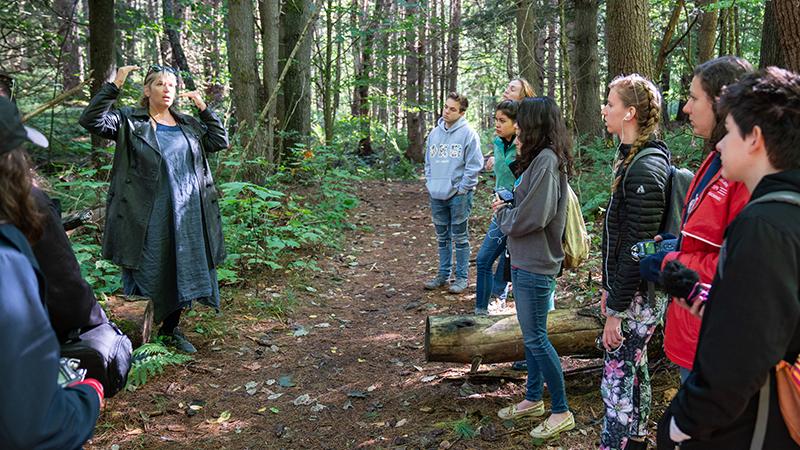Student performance to display the experience and environment of Lake George
December 7, 2018

On Wednesday, Dec. 12, students at Rensselaer Polytechnic Institute will present The Wave: An Immersive Sensory Exchange, an immersive installation that synthesizes the human experience of Lake George with real sensor data collected from the lake by Rensselaer researchers.
Free and open to the public, the performance will take place at 7 p.m. in the Goodman Studio at the Curtis R. Priem Experimental Media and Performing Arts Center (EMPAC) at Rensselaer. It will include video and audio field recordings as well as data visualization and sonification to form a “hybrid experience” that captures both human and technological senses.
The project is a collaboration between invited artist Andrea Polli, an artist using art, science, and technology to highlight environmental issues; Rob Hamilton, assistant professor of music and media; and Ted Krueger, associate professor in the School of Architecture at Rensselaer. It was developed by students in the Production Installation Performance (PIP) Studio with those in a data sonification course with the goal of capturing both the scientific and experiential nature of Lake George. Rick Relyea, professor and director of the Jefferson Project at Lake George, provided the students with data for the installation. The Jefferson Project at Lake George is a collaboration between Rensselaer, IBM Research, and The FUND for Lake George to better understand the impact of human activity on fresh water.
“PIP shows students that there are important connections between art, architecture, and in this case, science,” said Krueger. “They have the opportunity to experience the process of fusing disciplines to see the world from different perspectives.”
The Wave: An Immersive Sensory Exchange demonstrates the collaborative spirit of The New Polytechnic, the driving model for teaching, learning, and research at Rensselaer, as well as Art_X, a teaching and learning initiative designed to help Rensselaer students discover connections between art, science, and technology.
The project was funded by the Chris ’49 and Marcia Paris Jaffe Program in Art, Music, and Architecture. The Jaffe family has provided opportunities for collaboration between architecture and the arts since the 1990s.